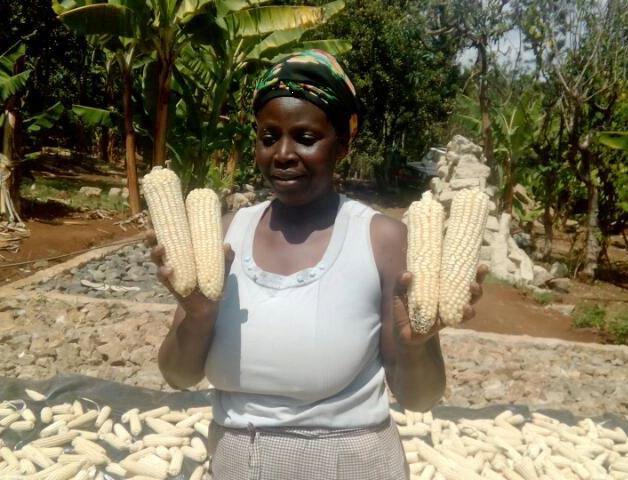
Mulching Means More Maize
Salome spends a lot less time on farm work because the mulching she does suppresses weeds and frees her from hoeing, a task that used to consume most of her time.
Like most farmers in this dry region of Kenya, Salome’s maize yields were increasingly disappointing until she tried a number of techniques aimed at building soil fertility and retaining moisture. This harvest, Salome’s production tripled in spite of a lack of rain. She had improved her soil with such conservation agriculture practices as minimum tillage, applying manure as fertilizer, crop rotation, agroforestry, and using drought-tolerate varieties. But, for Salome, the technique she most appreciates is mulching. With less overall work, her harvest increased from one to four 220-pound bags of maize in the same small plot.
She and other farmers have also started practicing better post-harvest grain handling and storage, including drying maize on tarps in the sun to prevent the poisonous fungus aflatoxin. Many are storing their grain now in hermetically sealed bags that prevent moisture and pests without chemicals. Higher yields and reduced post-harvest losses mean more overall food for their families, more to sell, and more to plant the following year.
Participant farmers are also planting trees to produce fruit, fuel, wood, shade, and mulching materials. All these and other improved practices are taught at the program’s two hands-on Farmer Field Schools and disseminated through their communities by trained facilitators. When they see the great results that conservation farming yields, area farmers go on to put their new knowledge to work on their own farms.
Kenya Tigania encompasses 7 Communities, 200 Households, 1,000 Individuals
Led by World Renew and local partner ADS – Mt Kenya
